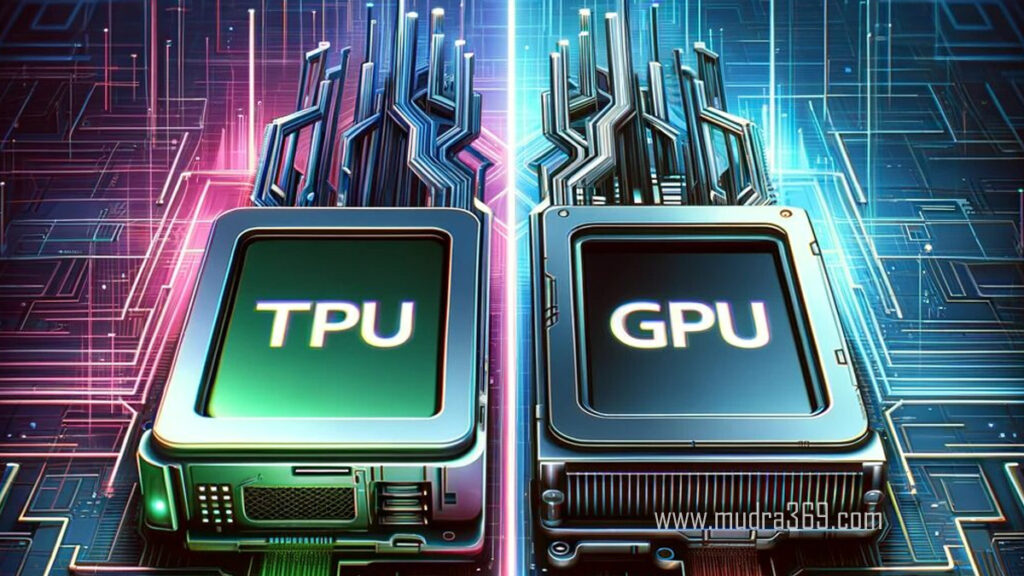Table of Contents
Google Challenges Nvidia.. For years, Nvidia has held an iron grip on the artificial intelligence industry. Now, Google is making its most aggressive move yet to break that monopoly.
Its advanced Graphics Processing Units (GPUs) became the undisputed engine for training and running large-scale AI, catapulting the company to a multi-trillion-dollar valuation.
Google has announced the general availability of “Ironwood,” its seventh-generation and most powerful Tensor Processing Unit (TPU) to date.
This custom-built chip is not just an internal upgrade; it’s the centerpiece of Google’s strategy to lure the world’s top AI companies away from Nvidia’s hardware and onto its own Google Cloud Platform.
Google Challenges Nvidia.. Ironwood
Ironwood is an application-specific integrated circuit (ASIC) designed from the ground up for one purpose: to handle massive AI workloads with extreme efficiency.
While Nvidia’s GPUs are general-purpose tools that were adapted for AI, Google’s TPUs are custom-built for the specific mathematical operations (tensor operations) that underpin AI models.
Key capabilities of the new Ironwood chip include:
- Massive Performance: Google claims Ironwood delivers more than four times the performance of its previous TPU generation.
- Unprecedented Scale: Ironwood is designed to be networked into “superpods.” A single pod can connect 9,216 individual chips, allowing them to function as a single, colossal supercomputer for training and running the largest, most complex AI models in existence.
- High-Bandwidth Memory: Each chip is equipped with 192 GB of HBM3E memory, which is more on-chip memory than many of Nvidia’s top-tier offerings. This allows larger models and more data to be held directly on the chip, dramatically speeding up processing.
Google Challenges Nvidia.. The Strategy: Attacking Nvidia’s Fortress
Google’s challenge to Nvidia is a two-pronged attack focused on cost and scale.
A Vertical, In-House Advantage:
Google is one of the few companies in the world with the resources to build a completely “vertically integrated” AI stack.
It develops its own AI models (like Gemini), builds its own custom chips to run them (Ironwood TPUs), and owns the massive data centers that house them (Google Cloud).
By controlling the entire pipeline, Google can optimize its hardware and software to work together perfectly.
Furthermore, this integration, in theory, allows Google to offer AI computing power to its cloud customers at a significantly lower cost and with greater efficiency than competitors who must first buy expensive GPUs from Nvidia.
Scoring a Major Customer:
To prove Ironwood isn’t just a science project, Google has secured a landmark customer: Anthropic. The AI startup, famous for its “Claude” family of AI models, has committed to using up to 1 million Ironwood TPUs to power its systems.
This massive vote of confidence from a leading AI developer signals to the market that Google’s hardware is a viable and powerful alternative to Nvidia.
Can Google Break Nvidia’s “CUDA Moat”?
Despite the power of Ironwood, Google faces a monumental challenge. Nvidia’s greatest weapon isn’t just its hardware; it’s its software. Nvidia’s CUDA is a software platform that allows developers to harness the power of its GPUs.
Over the last decade, an entire ecosystem of AI tools, libraries, and developer skills has been built around CUDA.

However, for most companies, switching from Nvidia to Google’s TPUs isn’t as simple as unplugging one chip and plugging in another, as it would require rewriting code and retraining entire teams, a barrier known as the ‘CUDA moat’.
Google is attempting to lower this barrier by improving its own software tools (like JAX and PyTorch/XLA) to make it easier for developers to run their existing code on TPUs.
Why This Matters..?
The battle for AI chip supremacy is about more than just a corporate competition because the company that controls the underlying hardware of AI effectively sets the price and pace of innovation for the entire industry.
Nvidia’s dominance has led to soaring costs and severe supply shortages, creating a bottleneck for AI development. Google’s Ironwood represents one of the first credible threats to that dominance.
If Google succeeds in offering a cheaper, faster, and more available alternative, it could democratize access to large-scale AI, fuel a new wave of innovation, and reshape the power dynamics of the tech industry.
The war is far from over, but with the launch of Ironwood, Google has officially fired its loudest shot yet.


